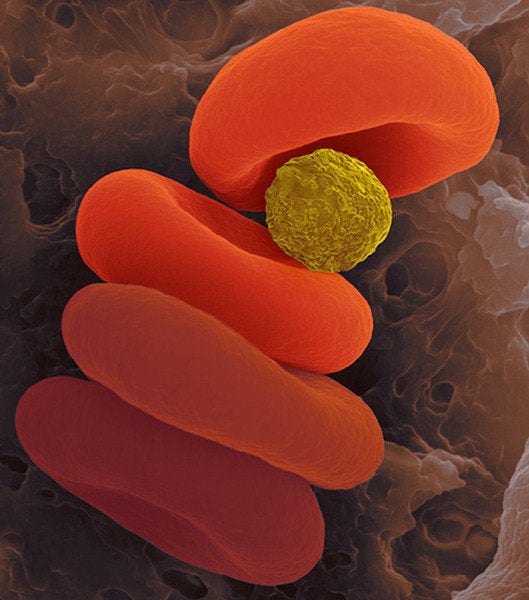
By Sarah C. P. Williams
John Kheir knows what it's like to lose a race against time with oxygen. In October 2006, the pediatric critical care doctor was treating a 9-month-old girl admitted to Boston Children's Hospital with viral pneumonia. As her disease worsened, her lungs hemorrhaged, filling with blood and blocking her breathing. Kheir jumped into action, shoving a breathing tube down her windpipe to help get air to her lungs, performing CPR, and eventually putting the baby on a machine that took over for her heart and lungs. But in the minutes it took to restore the flow of air into the young girl's body, her brain had already suffered permanent damage because of the lack of oxygen. She died a few days later.
Devastated, Kheir began looking for better ways to get oxygen into the body. Now, he's found one. In a new study, published online today inScience Translational Medicine, he and colleagues report the development of microparticles filled with oxygen gas that can be injected directly into the bloodstream. The particles quickly dissolve, releasing the gas and keeping organs, such as the brain, from suffocating.
"This is a potential breakthrough," says cardiac intensive care doctor Peter Laussen of Boston Children's Hospital, who was not involved in the work. "You can apply this across healthcare, from the battlefield to the emergency room, intensive care unit, or operating room."
The microparticles are tiny bubbles whose surfaces are membranes already used clinically to administer chemotherapy drugs and ultrasound dyes. But while those microparticles release their contents slowly, Kheir and his collaborators designed oxygen-containing particles that would dissolve as soon as they hit the bloodstream. They then tested the microparticles in rabbits breathing air low in oxygen. Within seconds of receiving the microbubbles, the levels of oxygen in the rabbits' blood rose from a dangerously low 70% to nearly 100% saturation, the ideal level.
"Essentially as soon as we started injecting it, clinically we started to see an effect," says Kheir. But if the injection stopped, the levels fell just as quickly, he says, indicating the need for the microparticles to be continuously administered.
Kheir says the therapy might have saved the brain of his pneumonia patient, or the lives of countless other patients whose organs have failed from oxygen deprivation. If it works in large animal trials that are currently underway and moves to human clinical trials, the therapy could eventually be used on anyone with a lung infection, asthma attack, or blocked airway. It could even be an addition to CPR, adds Laussen. "This is still in its infancy," he says, "but this idea of a new and novel way to effectively deliver oxygen is, I think, very exciting."
For now, the microparticles are bathed in so much fluid that—especially in young or small patients—the volume is a limiting factor in how long people could receive the infusion. The current maximum is around 15 to 30 minutes, Kheir says. "If we could increase the ratio of microparticles to fluid, we might be able to use this for even longer, and even more indications."
ScienceNOW, the daily online news service of the journal Science